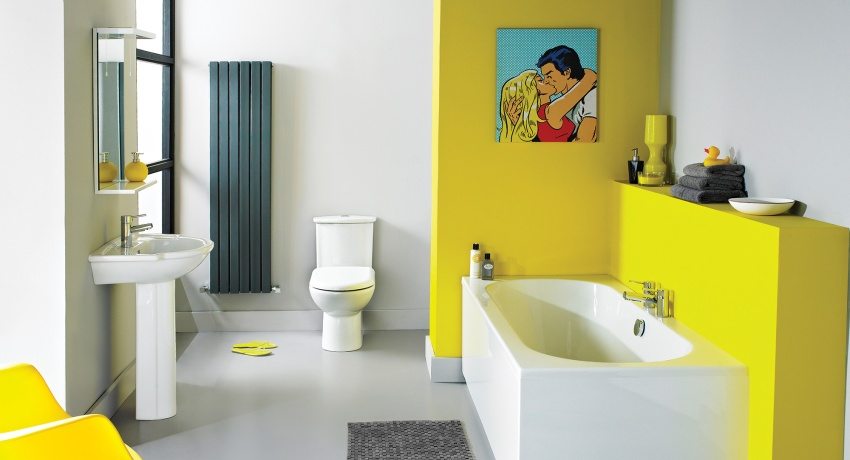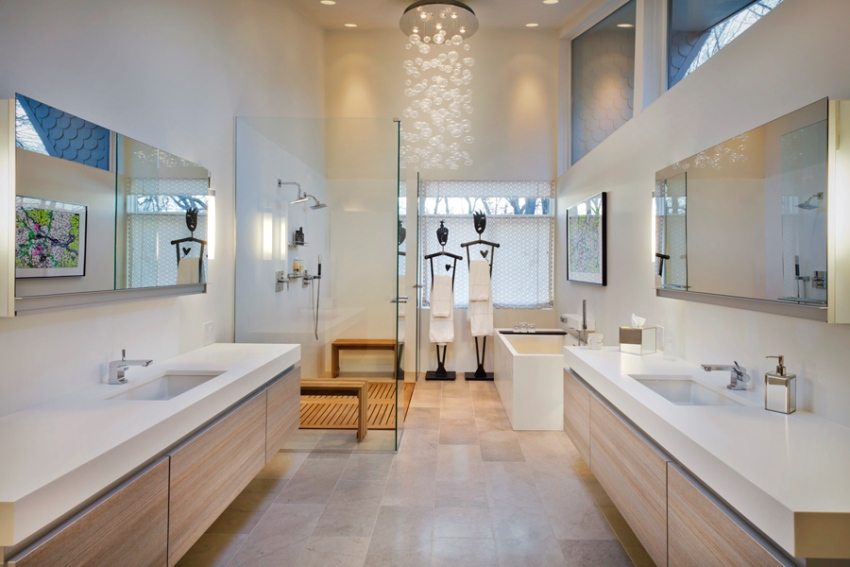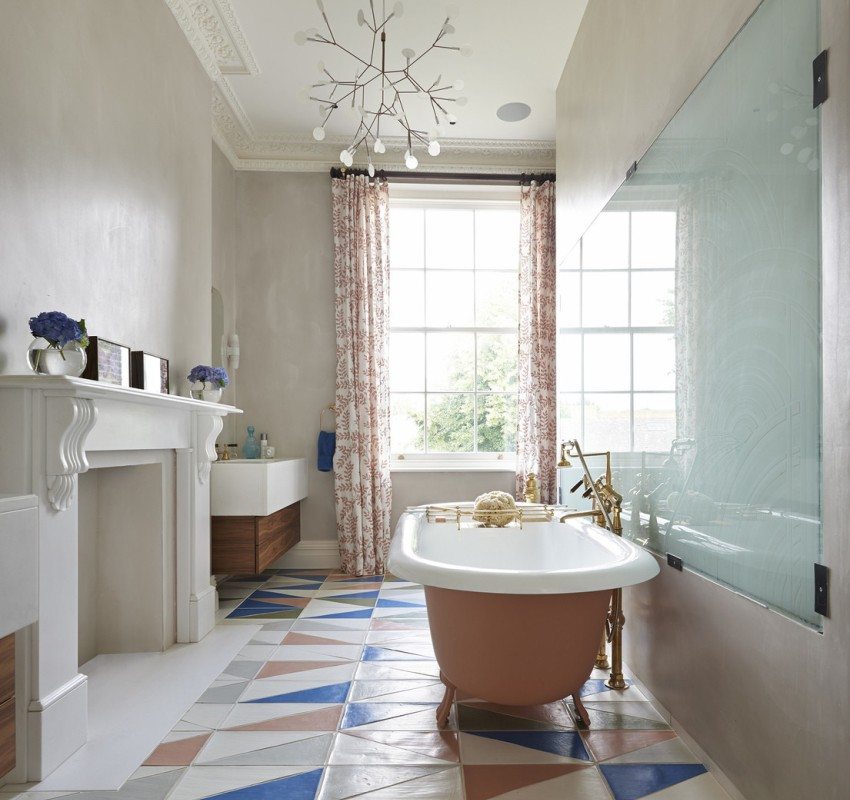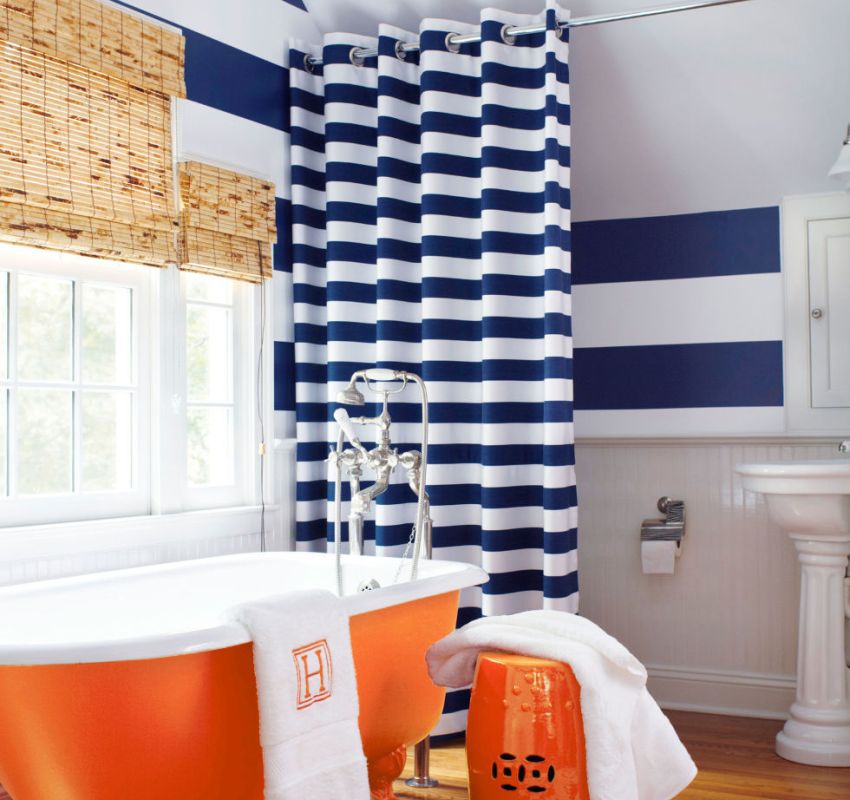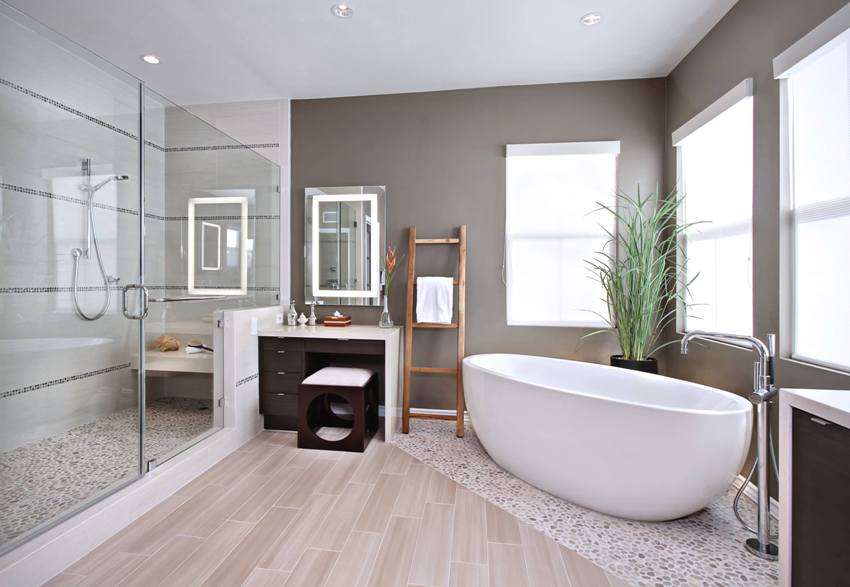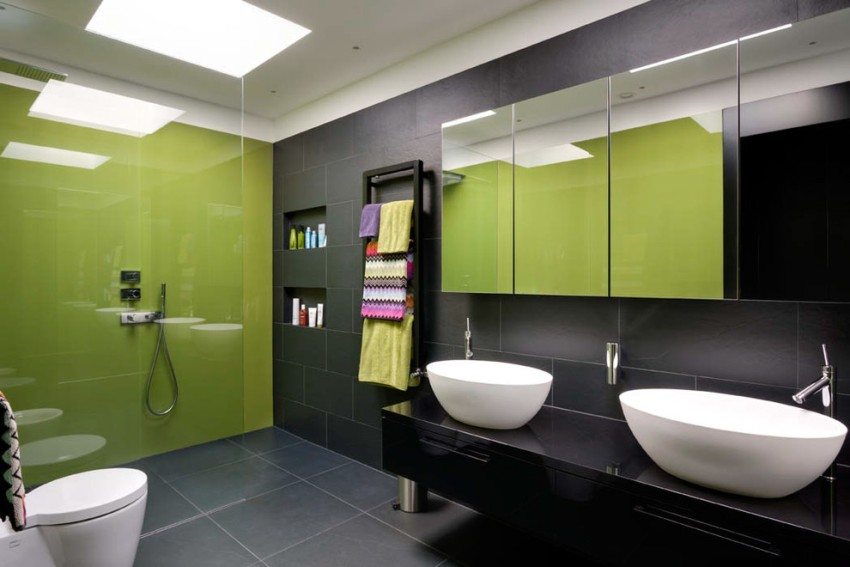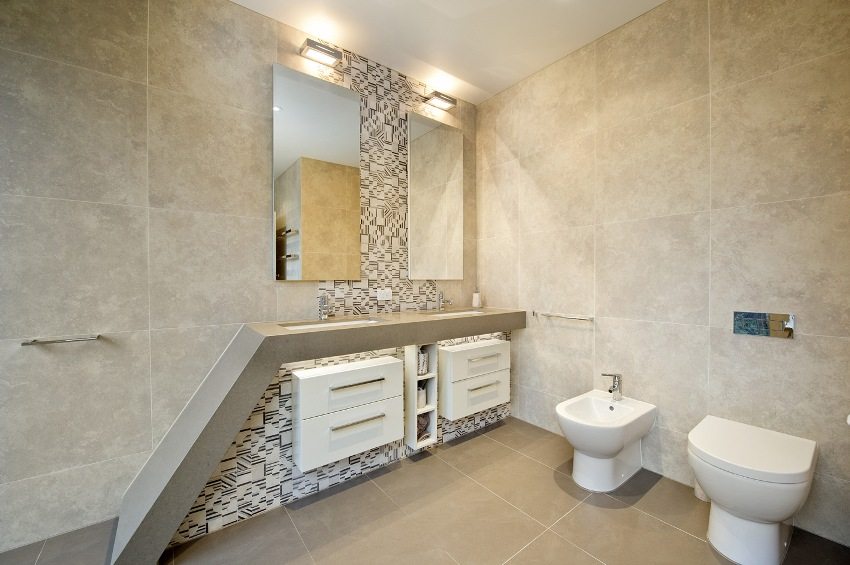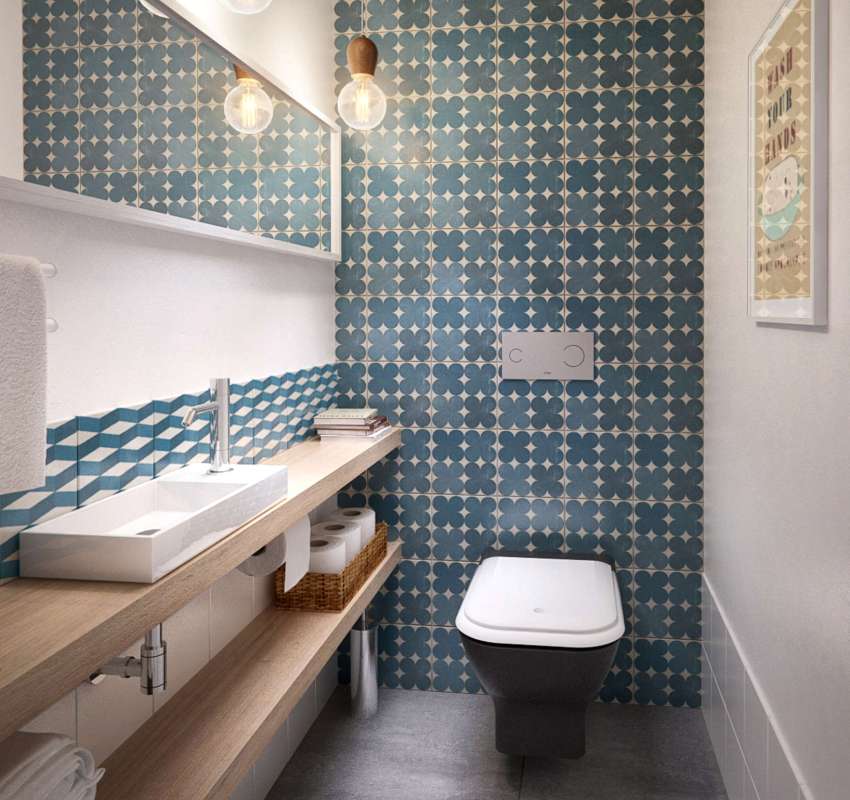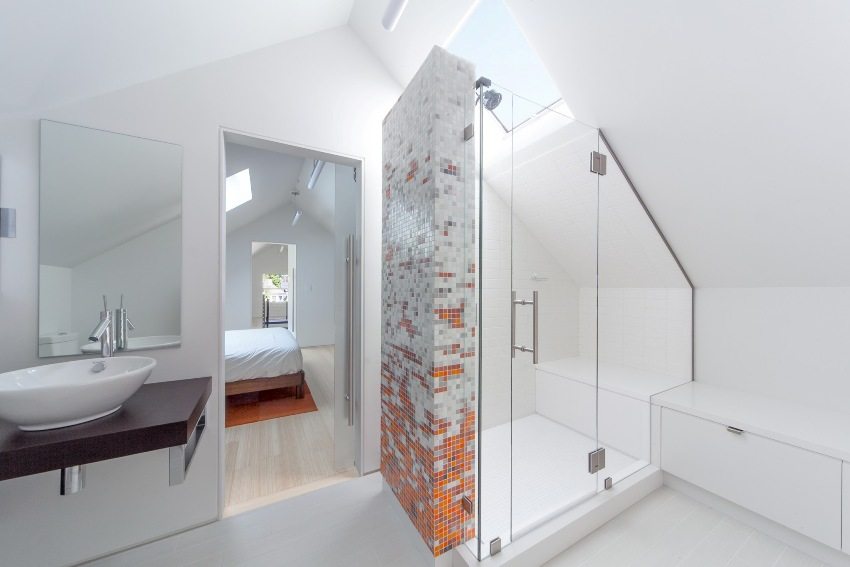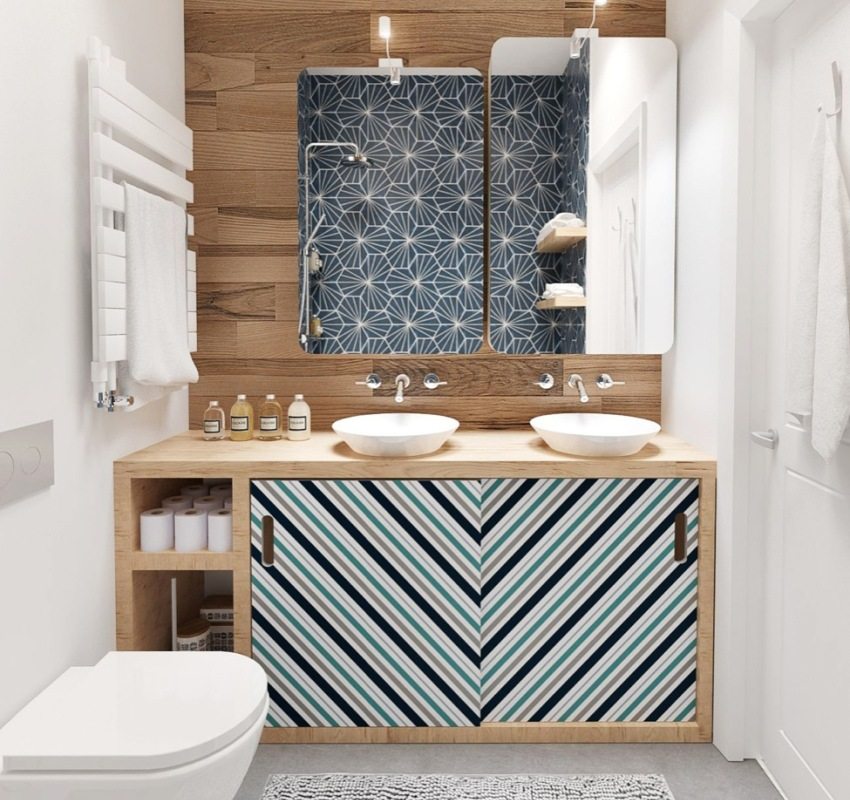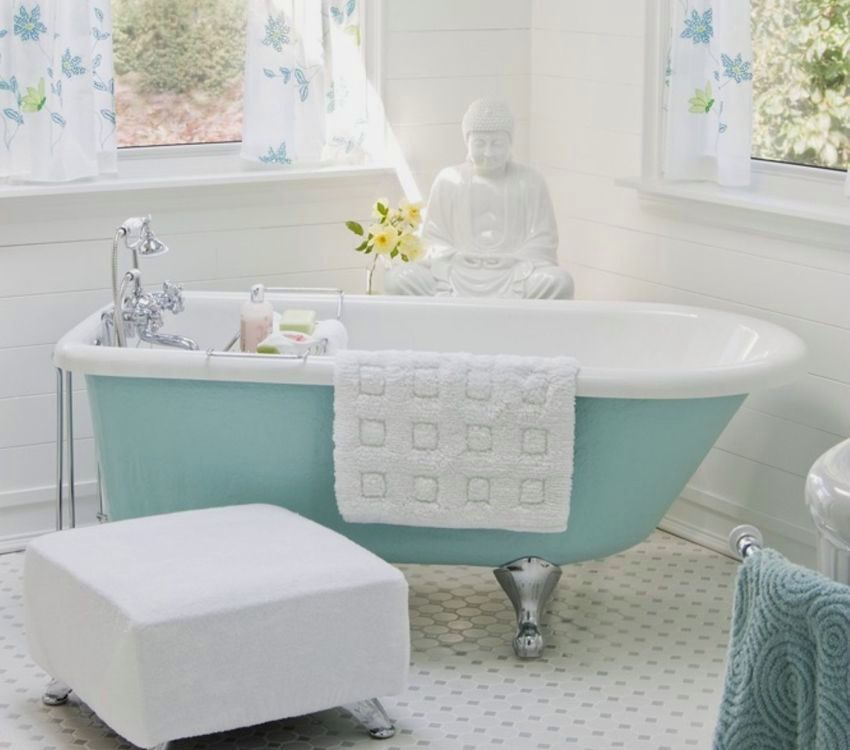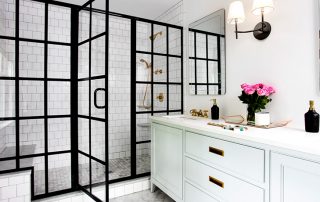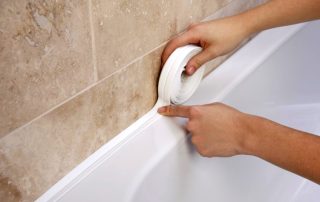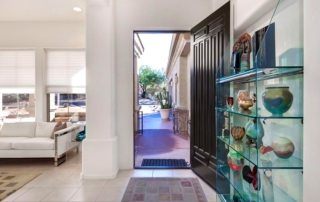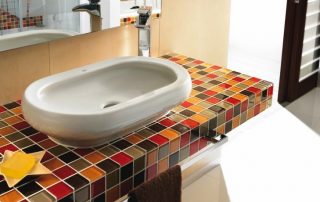Everyone who lives in a comfortable apartment will sooner or later make repairs to the bathroom and toilet, a photo of which later, perhaps, will become the subject of his pride. However, in order for this to happen just like this, you need to make the right choice of material for finishing these premises and make repairs in compliance with the requirements provided for by the building rules.
Content [Hide]
Requirements for materials for wet rooms
A bathroom and a toilet in any apartment are the concentration of a large number of utilities related to water supply and sewerage. For this reason, anyone repair in similar premises is obliged to solve the problem of hiding these ugly, but so necessary elements from human sight.
The constant use of water creates a humid "tropical" climate in the bathroom and the bathroom. This circumstance forces to use in repair work only those materials that are not afraid of a periodic increase in air temperature and increased humidity. Not only moisture resistance in itself is important, but it is also required that the material does not allow fungi, bacteria and mold to multiply, which like moisture.
In most old houses, where the first need to repair the bathroom and toilet (the photo confirms this), the premises have a very small area. For this reason, the chosen type of finishes and materials should not further aggravate this situation. High humidity, among other things, can cause a short circuit in the wiring. Therefore, the materials should not easily ignite or release toxic substances when melted.
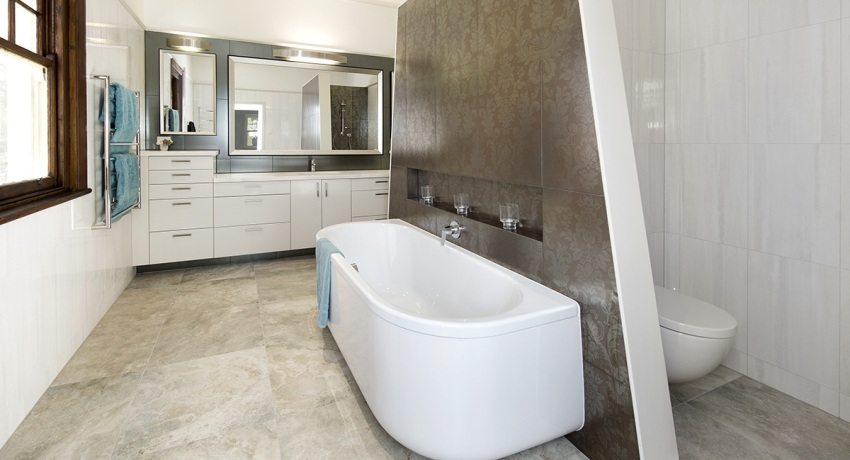
The toilet is separated from the bathroom by a sloping GKL partition
Repair of the bathroom and toilet, photos of the materials used and their properties
Understanding the requirements that must be met by the finishing materials used in renovation toilets and bathrooms, you can consider those that are now well-deserved popularity.
It is imperative to immediately brush aside materials that are unacceptable to use for finishing the bathroom. This is primarily wood. No matter how well it is processed, it is simply impossible to protect the tree from decay and the emergence of unnecessary "life". Unlike a bath, the wood will never dry out in the bathroom, since the temperatures are not so high there.Do not use metal cladding materials for bathroom decoration. The ubiquitous corrosion will destroy all of your work in a very short time.
Plaster finish for painting
Obviously, this embodiment of the repair of the bathroom and toilet has every right to exist. Photos of some of these works illustrate quite bright and non-trivial finishing options. It is important here that when plastering walls and ceilings, mixtures for damp rooms or outdoor work should be used.
Related article:
Photos of bathroom tile design and the style of its installation. Types of bathroom tiles according to different criteria. Stylistic design solutions for the bathroom.
Should not be used at all in the bathroom decorative plaster with a textured surface. It will certainly become the source of your "headache" about dirt, which will very soon appear in all irregularities. Painting of the applied and dried plaster must be carried out with waterproof enamels. Maintenance of such surfaces will be quite convenient, and after a few years the paint can be renewed.
Evaluating the properties of this material, we can come to the conclusion that plaster is the cheapest material, even taking into account painting... It is not difficult to apply it, having the appropriate technique for the production of such works. Maintenance of the painted surface is simple and convenient. However, this material requires "wet" work and complete removal of the old layer of plaster.
If the wrong mixture is selected, fungus and mold may appear. Ordinary plaster does not have pronounced decorative qualities. For this reason, this option for repairing a bathroom and toilet has the lowest popularity today. Photos of the design of these rooms mainly illustrate other finishing materials.
Useful advice! You should not start plastering if you have never plastered walls. This process is quite difficult for beginners. It takes time to learn how to do it smoothly.
Repair with PVC panels
Polyvinyl chloride is a versatile material. Its properties are such that it excludes even the very possibility of getting wet already at the molecular level. This circumstance favors the use of PVC panels for finishing bathrooms and toilets.
The panels are products with two layers in the form of strips. Their width is different, as well as the colors. A feature of the panels is that at the ends of each rail there is a tongue-and-groove locking connection. This allows you to very tightly cover the surface of the walls and ceiling, excluding the possibility of moisture penetration under the coating.
It is noteworthy that almost everyone can afford the cost of this material. It is strong and durable enough. Plastic care is not difficult at all. It only needs to be wiped periodically so that there are no traces of smudges. Installation on the walls and ceiling of such a coating is within the power of people who know how to properly hold tools in their hands. It is carried out either directly on a completely leveled surface, or on a special crate of guides.
In the second case, a smoother wall is obtained, but part of the area of the room is "stolen". Crate installation also solves the problem of masking communications.As a disadvantage, it should be noted the low environmental friendliness of this material and the need to seal joints and corners with a sealant.
Bathroom decoration with tiles: design photo
Traditional material for decoration toilet and the bathroom is tiled for the bathroom. A photo of tiled rooms prevails over all others. This is no coincidence. After all ceramic tile has full compliance with all the requirements for material for a wet room. It is used both for wall decoration and for floor decoration. A huge number of colors and textures of this material allows you to create unique design solutions.
Correctly glued tile excludes the possibility of moisture getting under it, so the walls are not afraid of fungus, mold, or pathogenic bacteria. Taking care of your bathroom tiles couldn't be easier. The photo perfectly shows how tile can shine, which is simply washed with any detergent solution. The high price and some complexity of installation are the disadvantages of this material.
How to tile a bathroom and a bathroom
Decorating a bathroom with tiles, a photo of the design of which can be easily selected to your taste, is a rather laborious process. It starts with the fact that all the old coating is removed. Using a perforator, beat off the old tile and, if necessary, the cement screed. Then everything is cleaned and irregularities are eliminated.
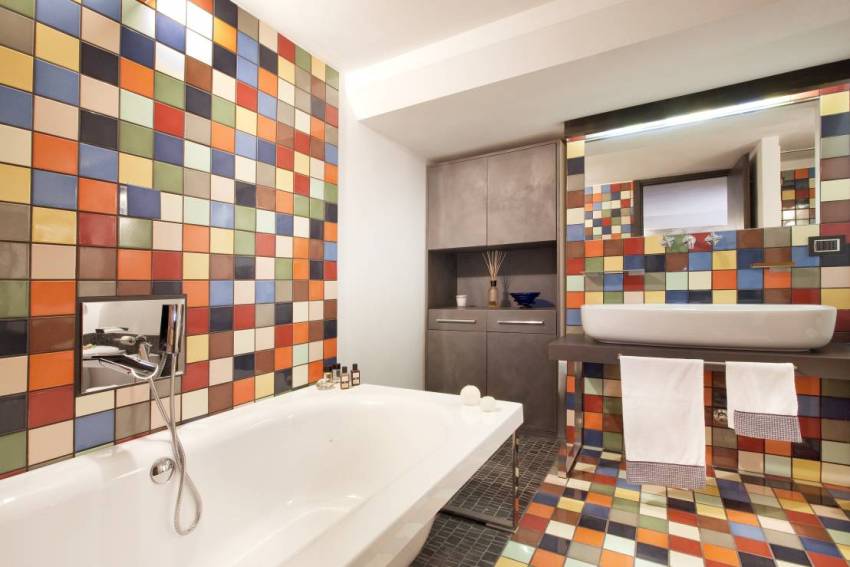
Multicolored tiles are often used for decoration bathroom design
Useful advice! It is better to use porcelain stoneware for flooring. It practically does not slip when wet. It is better to finish the walls with tiles for the bathroom. Photos of some compositions are very original.
The walls are faced with gaps, the uniformity of which is ensured by special crosses. These crosses are placed in each corner of the tile. Start gluing the tiles from the bottom. The seams are processed in the same way. The corners between the walls must be sealed with silicone sealant.
